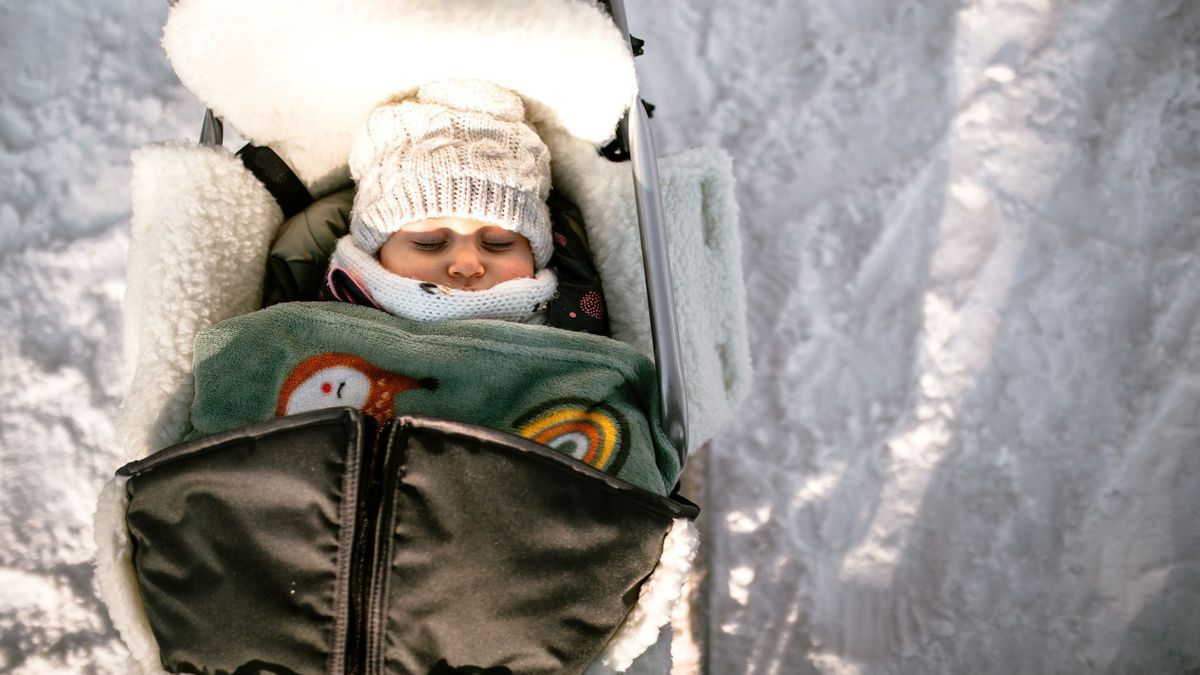
Having babies sleep in the open air, even in winter, is a common practice in Scandinavian countries. Called the “Nordic nap”, this method allows infants to sleep longer and more peacefully. However, some experts have reservations about the benefits of this concept.
On TikTok, it’s not uncommon to come across videos showing infants napping outside, wrapped up in their strollers, even in the middle of winter. This cultural practice called Nordic siesta is widespread in Scandinavian countries. Babies are wrapped in layers of wool, wearing a hat and protected by mittens. The parents let them sleep peacefully outside, sometimes without much supervision. And this no matter the temperature, as shown in a video by Martine Lovas (loviloo_) where we see a baby sleeping in a stroller left outside in the snow.
@loviloo_ #pov #momtok #livinginnorway #momsoftiktok #norway #povstories #babiesoftiktok #babiesontiktok #sleepingbaby #sleepingoutside #strollerhack ♬ Sunny Day – Ted Fresco
According to the Scandinavians, the Nordic nap has many benefits for the health of children, particularly when the weather is cold and dry. It would strengthen their immune system, protecting them from winter illnesses such as colds or coughs. This practice would also allow for better sleep, longer than a nap taken indoors, and more restorative. Historically, the Nordic nap would have been preferred to the classic nap due to poorly ventilated homes in these northern European countries. It would have been put in place in response to high infant mortality.
Better sleep
In 2008, a study conducted by Marjo Tourula, a researcher at the University of Oulu in Finland, demonstrated the benefits of this habit on infant sleep. “It’s clear that babies sleep longer outside than inside“, she explained to the BBC in 2013. According to her research, naps taken indoors lasted on average one to two hours, while those taken outside ranged from one and a half to three hours. “It is likely that the limitation of movements by clothing increases the duration of sleep and that a cold environment allows the child to be swaddled without making him too hot.“. The same study reports that the ideal temperature for an outdoor Nordic nap is -5°C, provided the baby is dressed warmly.
Risk of hypothermia
However, studies on the benefits of napping on babies’ immune systems are less positive. Pediatrician Margareta Blennow tells the BBC that reports from the Swedish Environmental Protection Agency show contradictory results. “Some studies have found that preschoolers who typically spent many hours outdoors—and not just for naps—took fewer days off than those who spent most of their time indoors.“, she explains. But she specifies that in other studies, there was no notable difference.
For Dr Jennifer Shu, an American pediatrician based in Atlanta, interviewed by Insider, this method of falling asleep presents potential risks for the health of infants: “A baby’s temperature can drop four times faster than an adult’s, and they can become hypothermic“. If she would not encourage parents to opt for this practice, the pediatrician also does not see any big problems in having her baby take Nordic naps, “provided that they (the parents) are careful and reasonable ”.
